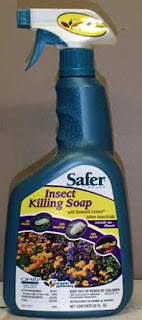Q.
We have
several tomato plants that had grown well with lots of leaves but there is no
fruit production. We have a good soil blend and other greens like kale, red and
green chard are doing well. I know that it has to do with pollination or lack
of it and wonder what else we can do to help these tomato plants.
 |
| Tomato flowers not setting |
A.
Several
factors come into play regarding tomatoes not setting fruit. Let's keep in mind
that some varieties of tomatoes are better suited for our hot, dry desert
climate than others. Good performing varieties have included Early Girl, Patio,
Jet Star, Champion, Roma, Big Boy, Better Boy, Sweet 100, cherry tomatoes in
general, grape tomatoes to name just a few. There are others as well. Heirlooms
typically struggle in their production so selecting a variety that you know
should perform well and then experimenting with others that are unknown is
probably a pretty good idea.
 |
| Tomato flower on left has set but tomato flower on right did not. |
The
second problem is regarding how rich the soil is and the fertilizers applied.
Extremely rich soils with a high percentage of manures can promote a lot of top
growth at the expense of flower production. In other words, amending the soil
with a lot of rich ingredients high in nitrogen will promote a lot of leafy top
growth early in the season, delaying flowering.
Be careful when amending garden
soils that you don't overdo it with amendments. If you have a productive garden
already, I would not add more than 1 inch of compost to the soil and digging it
in to a depth of 8 to 10 inches. Soils that are not productive or have never
been underproduction might require 2 to 3 inches of compost initially added to
it with a 1 inch layer applied in subsequent years.
Starter
fertilizers added to the soil at the time of seeding or putting in transplants
should be fertilizers high in phosphorus (the second number) with moderate to
low amounts of nitrogen (the first number). Once a starter fertilizer has been
used, you should not fertilize tomatoes with a high nitrogen fertilizer until
you begin to see flowers setting. After flowers have set fruit, then go ahead
and feed the plants with small amounts of fertilizer once a month.
The
third problem is regarding the air temperature. Once air temperatures climb
above 95°F and nighttime temperatures are warm, tomatoes will no longer set
fruit. 95°F is not an on and off switch for setting tomato fruit. Some tomato
varieties will stop setting fruit in the low 90s and others will stop when
temperatures get our bit higher.
Keep
your tomatoes healthy during the heat of the summer and if summer temperatures
cool off to the low 90s for a brief time they should set if nighttime
temperatures are dropping as well. When temperatures climb back up again, they
will stop setting again. If you can maintain tomatoes into the early fall, they
will start setting fruit again when temperatures drop down.

















